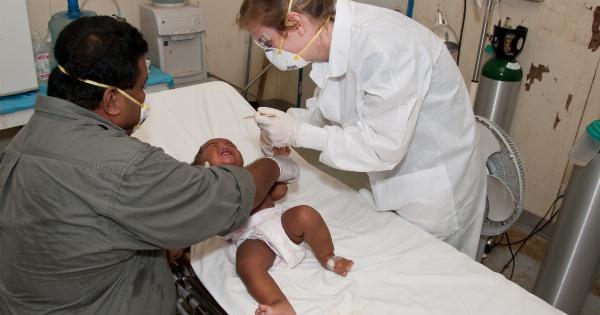Pyelonephritis is a severe and potentially dangerous infection of the kidneys. It commonly occurs as a result of a urinary tract infection (UTI) that spreads from the lower urinary tract to the upper urinary tract.
Acute pyelonephritis requires immediate medical attention as it can lead to complications if left untreated. Recognizing the symptoms of acute pyelonephritis is crucial in order to seek proper medical care promptly.
1. High Fever
A high fever is one of the primary symptoms of acute pyelonephritis. When the infection reaches the kidneys, it triggers an immune response to fight off the bacteria.
This immune response often leads to a fever, typically higher than 101 degrees Fahrenheit (38.3 degrees Celsius). The fever may come on suddenly and be accompanied by chills or sweating.

2. Flank Pain
Flank pain is another common symptom of acute pyelonephritis. The kidneys are located on either side of the spine, just below the rib cage. When the kidneys become infected, they may become inflamed, causing pain in the lower back or sides.
The flank pain associated with pyelonephritis can be severe and throbbing, and it may worsen with movement or pressure.

3. Increased Urinary Urgency
People with acute pyelonephritis often experience an increased sense of urgency and frequency in urination. They may feel the need to urinate more frequently and heavily, even if their bladder is not full.
This symptom is due to the inflammation of the urinary tract and kidneys, which can irritate the bladder and cause the sensation of urgency.

4. Painful Urination
Pain or a burning sensation during urination, known as dysuria, is another symptom of acute pyelonephritis. The infection and inflammation can cause irritation within the urinary tract, making urination painful.
Additionally, bacteria in the urine can further aggravate the urethra, leading to discomfort and a stinging sensation when passing urine.

5. Blood in Urine
Hematuria, or the presence of blood in the urine, can indicate acute pyelonephritis. The infection can damage the lining of the urinary tract, causing small blood vessels to rupture and mix blood with the urine.
Hematuria may cause the urine to appear pink, red, or tea-colored. It is important to note that blood in urine may also be a sign of other medical conditions, so a proper diagnosis is crucial.

6. Fatigue and Weakness
Many individuals with acute pyelonephritis experience fatigue and weakness as a result of the infection. The body’s immune response to the infection can leave a person feeling drained and lacking energy.
Additionally, the inflammatory process within the kidneys can lead to a decrease in kidney function, which can contribute to feelings of fatigue and weakness.

7. Nausea and Vomiting
In some cases, acute pyelonephritis can cause nausea and vomiting. The infection and inflammation within the kidneys can trigger an imbalance in the body, leading to feelings of nausea.
The release of certain chemicals during infection can also affect the digestive system, resulting in vomiting. These symptoms, along with others, should not be ignored, especially if accompanied by other signs of pyelonephritis.

If you experience any of the above symptoms, it is essential to seek medical attention promptly. Acute pyelonephritis can lead to serious complications, including kidney damage or sepsis, if left untreated.
A healthcare professional can provide a proper diagnosis and prescribe appropriate treatment, such as antibiotics, to combat the infection and prevent further complications.




























